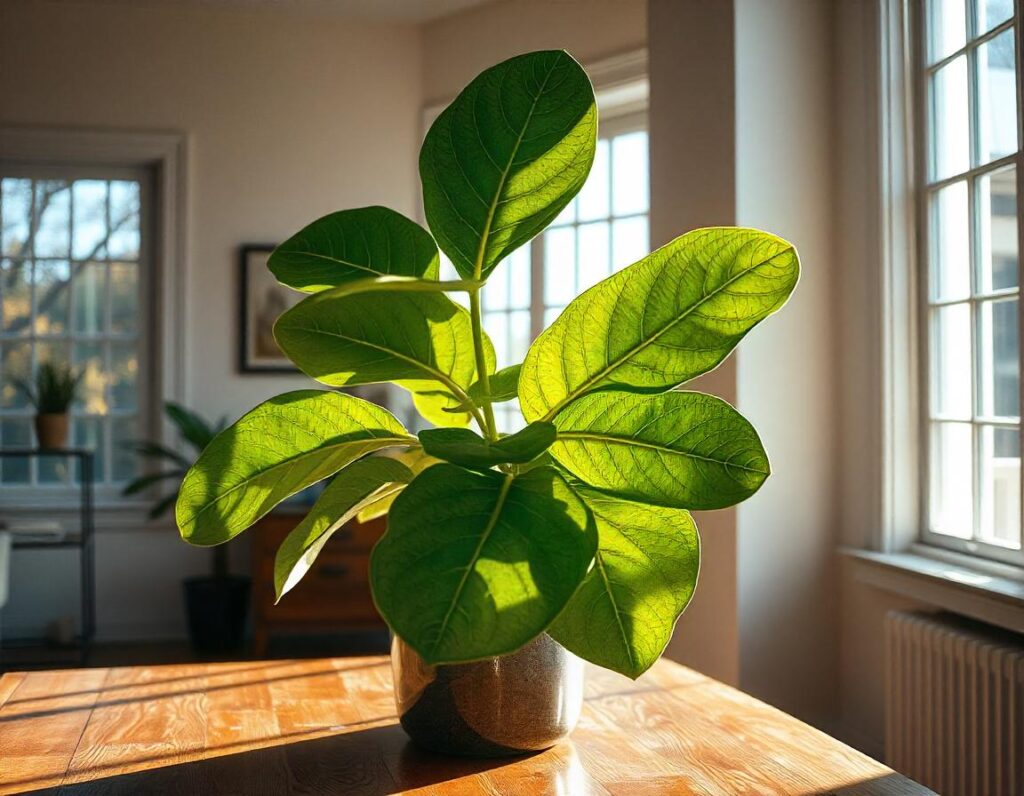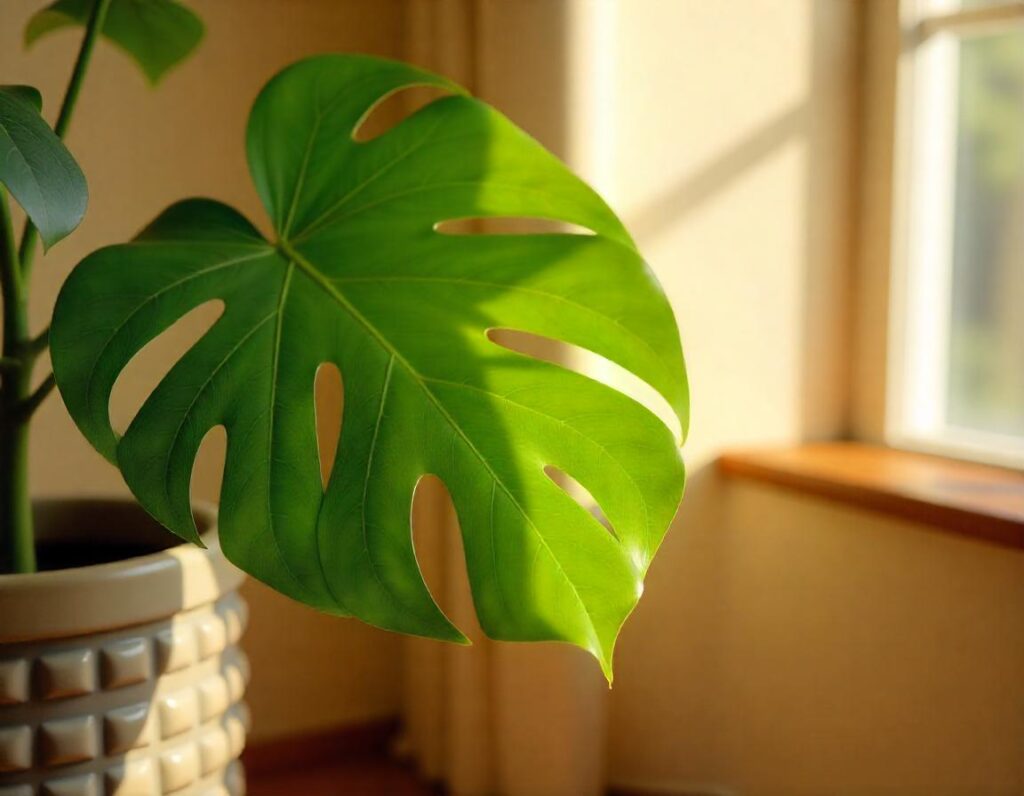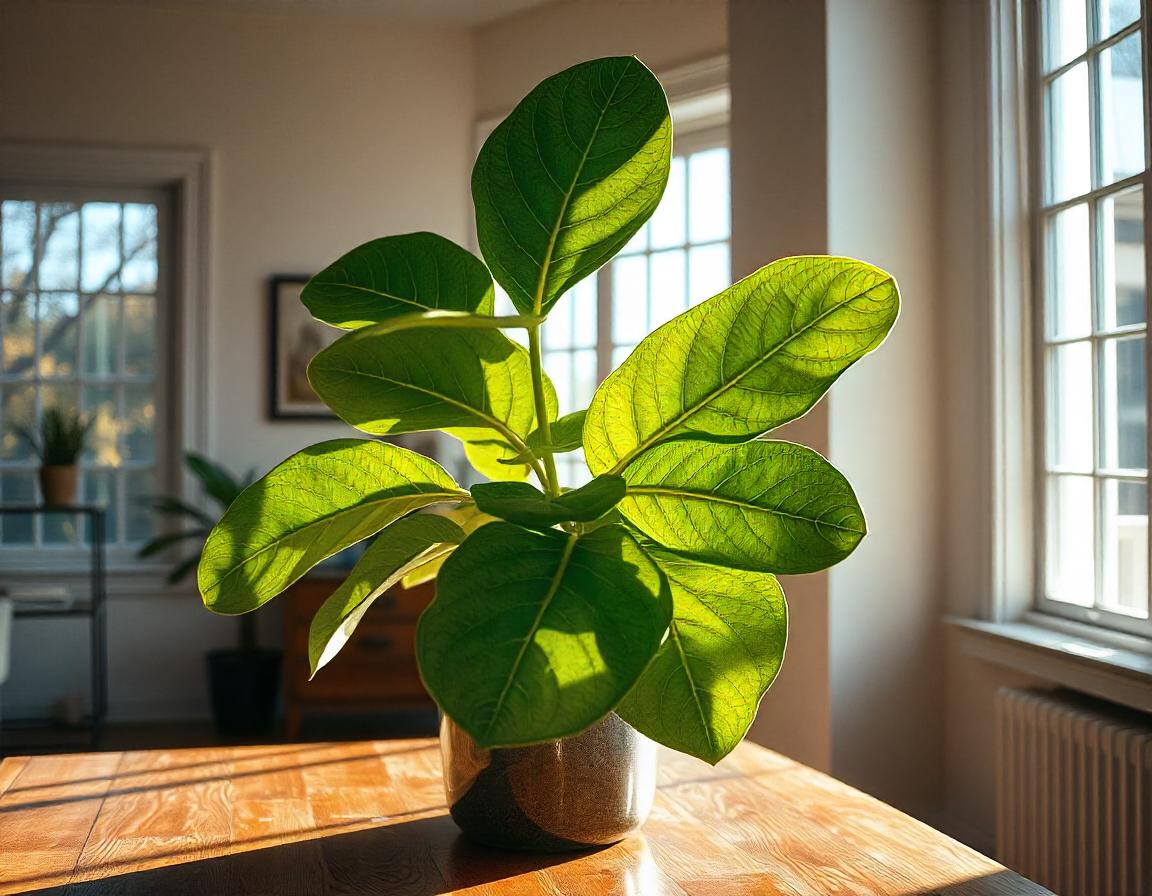Prized for its dramatic leaves and purifying properties, the Fiddle Leaf Fig’s, Ficus lyrata health is inextricably entwined with the light environment. Being able to identify the ideal light for a Fiddle Leaf Fig is crucial in your foster of a healthy, dynamic specimen in your home.
This article covers everything from the special needs of Fiddle Leaf Fig, methods of positioning, seasonal adjustment with respect to its need for light down to ways of overcoming low-light settings. Knowing about the quality of light will better equip the plant owner to avoid a few common mistakes that impede the plant’s growth.
Understanding Fiddle Leaf Fig Light Requirements
Fiddle Leaf Fig plants do prefer bright, indirect light for optimal health and growth. Their native region is West Africa, where they root and grow in the rainforest canopy, where filtered sunlight exists. By knowing this, an indoor farmer will have success with such a plant.
The best light for Fiddle Leaf Fig involves giving them a lot of sunlight without being exposed to hard direct rays, which may burn the leaves. In the best scenario, these plants can adapt to various lighting setups; however, they display healthiest growth when positioned near east or west-facing windows, where they get consistent light.
This allows the Fiddle Leaf Figs to gradually get used to light and not be stressed. Reactions about the environment provide potential for changing over time. Thus, testing the intensity of light and its length is an important first step in raising a healthy Fiddle Leaf Fig.
How to Find the Ideal Light for a Fiddle Leaf Fig
Fiddle Leaf Figs thrive in bright, indirect light, really the optimum light for the growth of Fiddle Leaf Figs. Direct sun could burn the leaves, creating brown spots. A well-lit room with east and south-facing windows provides ideal lighting.
While they can tolerate moderately bright light, the growth may not be as rapid or the stems might get leggy in their stretch towards a light source. Consistent exposure to good light sustains their brilliant green foliage and general health.

During the fall and winter seasons, sunlight is not as strong. One can move the plant closer to a light source during these periods to retain an optimal growth pattern. In spring and summer, however, it is best to keep the plant away from strong direct sunlight.
Giving it the right amount of light, and knowing what kind of light it requires, will help owners encourage a healthy and flourishing Fiddle Leaf Fig. Knowing these subtle differences in lighting is key to taking care of this ever-popular indoor plant.
Position for Optimum Growth
Optimal placement for a Fiddle Leaf Fig would mean the strategic placing to ensure that it gets the right amount of light, so crucial for its health and growth. It would involve knowledge about the exact placing of windows and in which direction the room faces, which enhances the well-being of the plant.
When selecting a window placement, select one that has very bright, indirect light. Most often, south-facing windows will be the most optimum because they provide light all day long. Definitely avoid having direct sun, which can burn the leaves of this plant and cause damage not able to be repaired.
Room orientation also makes a difference. If your room does not have sufficient natural light, then put the plant near east-or west-facing windows, in which case it is helpful to get light without strong rays. You can diffuse the sun and protect foliage with sheer curtains.
It is also a good idea to periodically reassess the placement of your Fiddle Leaf Fig, since different times of year will be different in terms of what constitutes the ‘best’ light for Fiddle Leaf Fig plants. You may have to rotate plants around so that your Fiddle Leaf Fig gets the best light available during different parts of the year. You should reposition your plant if you find it starting to show signs of not getting enough light or if it is becoming stressed.
Window Placement
Where your Fiddle Leaf Fig sits in relation to the window largely depends on how fast or how healthy your plant may grow. Ideally, your plant grows under bright but indirect light; hence, a place near east or west-facing windows suits it well. This orientation provides gentle morning or late afternoon sun, which promotes robust growth while at the same time avoiding the possibility of leaf scorch.
The Fiddle Leaf Fig will burn if placed near south-facing windows due to very strong sunlight. This might burn them and create brown edges on its leaves, or make them curl. On the other hand, placing it too far from a window can cause underexposure, creating a leggy plant that will not be as vibrant. Continue to assess the quality of light on your plant regularly and change its placement to keep the conditions in its favor.
In choosing windows for your Fiddle Leaf Fig, you should know about the surroundings. You will want to keep it as far away as possible from drafty areas or from temperature fluctuations to give it a good opportunity at thriving. Placement near certain windows correctly provides all the difference in giving your plant the right amount of light needed to thrive, usually optimal for a Fiddle Leaf Fig.
Room Orientation
One of the most important things with choosing the best light for Fiddle Leaf Fig involves room orientation. Typically, south-facing rooms get sunlight for the longest periods, hence just ideal for these light-loving plants. Conversely, north-facing rooms receive only indirect light, which is too minimal for the best growth a plant warrants.
East-facing rooms supply soft morning sunlight, ideal for young plants. West-facing rooms have afternoon sun that is a lot more intense. Welcomed it may be, the strength might make careful placement essential to prevent scorching of leaves. Knowing such dynamics will help you place your Fiddle Leaf Fig even better.
Also, take into consideration the amount of sunlight the plant gets and note whether the tree or building obstructs the direct sun. It is very important to have a clear route through which the light can keep coming to your Fiddle Leaf Fig. Proper orientation of your room contributes to the healthy growth of the plant and its beautiful foliage while enhancing the overall aesthetics of your room.
Seasonal Adjustments for Light
Seasonal light adjustments are relevant to maintaining a healthy Fiddle Leaf Fig, as these plants respond differently to various light conditions throughout the year. When natural light is at its best during spring and summer, bright, indirect sunlight is the best type of light one can offer to the plant. This is actually when the plant is in its active growth stage and will require more light exposure.

As fall approaches and daylight hours decrease, it pays to acclimate your Fiddle Leaf Fig incrementally. Move it closer to a light source to offset the diminishing natural light. Keep in mind that the plant should still receive plenty of indirect light to avoid it getting leggy or losing leaves.
In winter, because of the sun’s changed angle, it usually means less-than-perfect light. During the winter season, grow lights might help, especially if your home has cloud cover or the days are short. This will help in keeping the light optimum and well-balanced for good health of the plants.
This will be further enhanced through regular monitoring of responses by the plant during its seasonal changes. Changing its position in regard to light levels will help in promoting strong growth and vitality throughout the year.
Care under Low-Light Environment
The Fiddle Leaf Fig does like bright, indirect light; therefore, one should be very careful in placing them in low-light conditions. Although they can tolerate low light, this may affect the growth rate and color vibrancy of the leaves. This calls for some special ways to tend to them for optimal health.
First, assess the light available. Be aware of the possible sources of light: windows; installation of mirrors or additional reflective surfaces to distribute the natural light. Additional lighting can be provided; some options include LED grow lights or T5/6 fluorescent fixtures with a natural sun-spectrum type effect.
This will ensure that the plant receives equal amounts of light from any available light. Additionally, observe the foliage for stress. Yellow leaves mean low light, while burned leaves mean too much exposure.
Summary: Monitor lighting, take reflective measures, and install supplemental lighting wherever needed to effectively address a low light condition with a Fiddle Leaf Fig and retain the plant’s health and vigor.
Importance of Light Quality
Light quality refers to the spectral composition of light and, therefore, will determine the extent of photosynthesis a plant undergoes and how healthy the plant will be. Ideally speaking, the perfect light for Fiddle Leaf Fig contains a well-balanced spectrum including both warm and cool light.
A light source preferably enables the growth of the plant and also the vibrancy of the leaves to make it more gorgeous. Plants are responsive to a certain wavelength of light, mainly the blue and red lights, which influence foliage development and the plant’s flowering.
Quality of Light
In practice, quality of light may be considered based on several aspects:
- Color Temperature: Ideal ranges lie between 2700K and 5000K.
- Light Intensity: Adequate brightness needs to be ensured.
- Duration: Fiddle leaf figs typically require 10-12 hours of light daily.
Utilizing full-spectrum LED lights or placing the plant near windows where natural light prevails will achieve optimal light quality for a thriving fiddle leaf fig.
Common mistakes in Lighting to be Avoided
Overexposure and underexposure are probably the most common mistakes in lighting that create a huge difference in health for your Fiddle Leaf Fig. In fact, placing it in the scorching sun for several hours would burn its leaves into brown spots, causing it to wilt. Too little light would impede growth, giving it spindly stems along with making it less vibrant.
The other shortcoming arises because of inconsistent lighting conditions. Fiddle Leaf Figs are said to like very stable light conditions; hence, frequent variation of the plant from one place to the other might lead to stress. This is normally manifested through dropping of leaves, which affects the general life of the plant negatively.
The other significant element is the type of glass on the window. Tinted or smoked glass diminishes the intensity and quality of available light, therefore affecting the development of your plant. Being certain that your Fiddle Leaf Fig receives ample light will give you a great chance of developing a strong and healthy specimen.
Dangers of Overexposure
Fiddle Leaf Figs have done extremely well under bright, indirect sunlight. Overexposure to direct sunlight is truly dangerous. This can cause a condition called leaf scorch, wherein brown spots or crispy edges leave the leaves unsightly and not very healthy at all.
Prolonged periods of strong sunlight not only scald the foliage but also can weaken the plant. The high light level interferes with photosynthesis, slowing down the important growth functions, which leads to stunted growth or even a decline in health.
In the case of severe overexposure, leaves will prematurely drop. A leaf drop is a sort of distress call, which means the plant can’t handle the excessive light, and this calls for reassessment in its placement. Keeping track of light levels and adjusting its placement is crucial for ensuring the best possible growth.
Overexposure kills the vitality that keeps a Fiddle Leaf Fig alive. Identifying what overexposure looks like will enable an owner to intervene before irreversible damage is done to an otherwise promising plant.
Effects of Underexposure
Serious underexposure will really stunt the growth and vigor of a Fiddle Leaf Fig. Too little light causes a stretching effect in plants, called etiolation, where plants grow spindly and toward whatever available light sources there are, leading to stretched-out stems with very few leaves. This can detract from that visually appealing look that many owners strive for when growing this plant.
Leaves also may begin to yellow, which is a sure sign the plant is receiving too little light to be able to perform photosynthesis. As the production of chlorophyll slows down, the plant becomes much more weak and sickly. The underexposure can also make the Fiddle Leaf Fig more sensitive to infestations of pests and diseases, because a weakened plant can hardly protect itself from these.
Other side effects of low light exposure are stunted growths. The Fiddle Leaf Fig loves bright, indirect sunlight, and if that is not available, the plant will find it challenging to grow new leaves or support the existing ones. This may be frustrating for those enthusiasts who want to grow a lush, wonderful specimen. The best light for Fiddle Leaf Fig should be monitored regularly to ensure good health and growth.
How to Grow a Healthy Fiddle Leaf Fig
Growing a healthy Fiddle Leaf Fig requires attention to one factor that makes all the difference in plant growth: light. The best light for Fiddle Leaf Fig involves giving it bright, indirect sunlight. Proper lighting will encourage healthy growth and will make the plant develop healthy, vibrant leaves.
Regular rotation will help in giving your plant equal light from all sides. It wouldn’t lean or grow asymmetrically. You can also use sheer curtains in diffusing strong sunlight and balancing the intensity of light quite effectively.
This is very important to observe the response of foliage to light. Inadequate light causes defoliation or slowdown of its growth, while yellowing leaves may hint at excessive amount of light. Addressing such signs in a timely manner will give you proper adjustment to your plant’s environment.

By understanding the integral relationship between light and growth, the gardeners are able to help their Fiddle Leaf Fig thrive. Correct manipulations of light conditions ensure not only the plant’s survival but also its beauty and decorative value.
The best light for growing the plant Fiddle Leaf Fig is highly relevant in contexts related to its growth and life expectancy. You will be in a position to give them the best environment by paying attention to proper light conditions, positioning, and seasonal adjustments that enable you to grow these beautiful houseplants.
The quality and quantity of light directly affect the well-being of the Fiddle Leaf Fig. Avoid the common mistakes in lighting to build a healthy plant capable of enhancing your living space, adding that stroke of vibrancy to your interior decoration.

